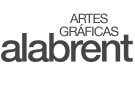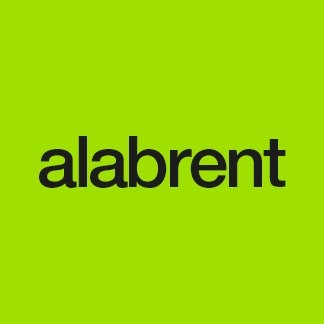Redacción Alabrent
Rob Musto, Operations Director at Nu-Coat, outlines their strategy: “Nu-Coat originated from concept back in 2014, mainly to produce niche products to fill a gap in the market for self-adhesives that the bigger players in the market don't produce and wouldn't entertain producing because of volume.”He continues: “Flexibility is key for us, we can change very, very quickly, whereas in comparison to some of the main players, that could take days and weeks in the campaign-type production that they operate under. We also don't need the large volumes that they require. With the small footprint of our coating line, that's probably half the length of a curing oven for our competitors. We achieve a cure within a few metres only, whereas if I compare that to a solvent-based system you're looking at a minimum of 50 metres to set up the process and probably until they validate what they've actually coated and cured, you're into hundreds of metres of material before they start. We probably can verify within 10 metres of a setup.”
From the outset, the production team at Nu-Coat had a distinct plan to produce using UV curing technology. They had been advised of the production and sustainability benefits of the UV Hot Melt curing process through their consultation with Tim Self at TS Converting, manufacturer of the renowned Elite Cameron range of coating and converting machinery. As Self explains: “We design machines specifically to suit customers’ requirements. The project that we engaged with our friends at Nu-Coat was to develop a range of UV-based Hot Melt applications where we brought together lots of different disciplines all in one machine, to enable them to produce products that traditionally would have been made using solvent-based and water-based systems.”
Musto was particularly focused on the environmental benefits of UV Hot Melt, before discovering the range of production benefits it brings; as he states: “The typical production and products in the market are solvent-based or water-based adhesive technologies. What we wanted to do from day one is become a greener production site for all of the standard product ranges, across a broad spectrum of applications.
“With UV we are solvent-free, so we don't have to worry about destroying any solvent waste either through extraction processes or recycling or cleaning. We have no requirement for additional heat sources, abatement systems, all using electrical energy. Without solvents, we don't have the concerns about the destruction of the VOCs that are generated, which is through another heat source of either an oxidation chamber or some other abatement system, which also then emits a certain amount of pollutants into the air.”
There is one further, thoughtful measure in place to reduce Nu-Coat’s environmental impact, as Musto explains: “The heat that's generated through the UV lamps, we have filtered through carbon filtration to destroy ozone, and then we generate the warm air that's recirculated back into our warehouse, so we reuse that heat energy out of the process and again that reduces what we emit to atmosphere.”
Tim Self is in full agreement: “I think there's a big emphasis on that, on every machine at the moment, that we have to design with the environmental issues in the forefront of our mind. Coating is a massive opportunity to have a big effect, because of course it's using a lot of product on a continuous basis. UV Hot Melts enabled us to get away from the traditional methods of coating and our customers see the benefit.”
Self also highlights the many features of the GEW NUVA2 curing system that were specifically designed in, to meet Nu-Coat’s individual requirements: “The design of the lamps and the cassette system is quite special. We have on this particular machine four lamphead bays, three of which are being used and occupied by lamps. The fourth is an opportunity to increase the performance for higher running speeds as and when they become a requirement of the customer. We also have a UV monitoring system for the lamp condition, which is a great benefit because ultimately the performance of the end product is determined by the amount of UV treatment that you apply to the adhesive.” He adds: “We also have the whole hood on a retracting system for cleaning, so the hood pivots up and the operator can remove each of the NUVA2 cassettes by sliding them out of the machine… so you can do any maintenance and cleaning functions out of the cassette itself... it’s very fast and very easy to do a clean-up and get back in operation.”
The combination of having UV curing and offering more sustainable substrates also enables Nu-Coat to target a particular type of customer, as Musto explains: “If we look at some of the large department stores in the UK, they tend to want very green credentials… so we have a range of non-PVC products and the UV technology becomes attractive to them because of that factor... so they have an understanding of what our reason for being is, and that starts a dialogue. Most of our competitors can't profess to be green - it is an interest-gainer, shall we say?... for want of a better description.”
Regarding the technical aspects of UV Hot Melt adhesives versus the conventional type, Self comments: “Traditional Hot Melts are rubber-based adhesives and are not particularly good in performance in extreme conditions. There's been a lot of development with the UV range of Hot Melts, which can not only match but also outperform in many cases the traditional products... you extrude 100% solid adhesive onto the product so there's no carrier as there would be in a solvent and a water-based system… which you then have to remove from the process and that's where a lot of energy goes. UV offers a very cost effective way of producing high performance laminates. A further advantage of UV adhesives versus the conventional type is the ability to vary coat weight, and the durability and stability of the end product.”
Rob Musto concludes by summarising his thoughts: “Looking at the UV system from the concept of the pilot line trials, into the scale up into full production, it's followed a stable path and everything we want from it has been provided, so it's very easy to work with, it's very easy for the operators to understand and maintain, and the support that we get and guidance, particularly in the early days... we wouldn't be where we are today without that.”



